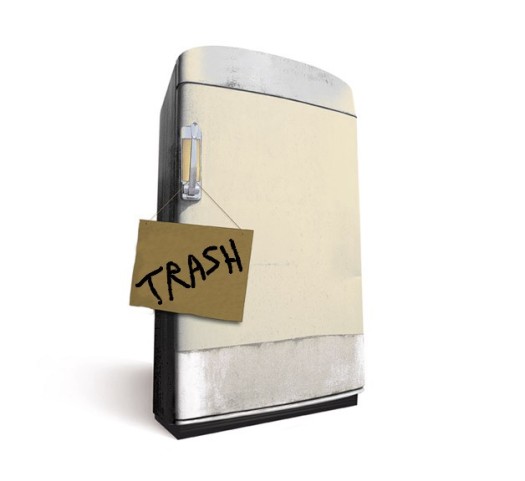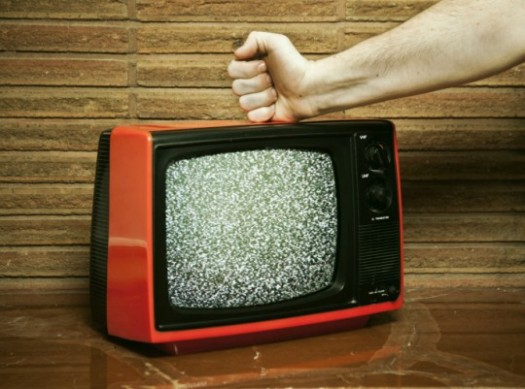Micromax subsidiary YU has gradually appraised with the launch of its new flagship smartphone, YU YUNICORN. They claim to overcome all the drawbacks of its previous toss Yuthopia, which heated up the talks in the news just before its launch but the poor performance of the phone spilled ice cold water on the expectations of the users.
Continue reading “YU YUNICORN- A power-packed phone at an affordable price”
TOP 5 SMARTPHONE TRENDS IN 2016
Innovations are at its peak with newer devices transforming human lives and making life easier than ever. With unending competition in the market, companies are coming up with ideas that exceed the best idea we have of a smartphone. 2016 will bring you much more user-friendly and user-efficient phones that your expectations would increase even more. Here are some innovations you’ll get to see in the coming year.
Continue reading “TOP 5 SMARTPHONE TRENDS IN 2016”
5 Most Awaiting Smartphones
The Indian smartphone market is touching the heights of revolution. Competition in smartphone industry is rising day by day and it’s getting tougher for the companies to hold over the market and to maintain their brand position, whether it’s a ruling brand or a new bee in the industry. Every upcoming new device is a better variant of its own having some signature specs inbuilt in it.
Continue reading “5 Most Awaiting Smartphones”
Top 3 Popular Apps’ Updates
Technology is something which has been making our lives more placid and advanced by bringing all the controls right in our grip. It is a considerable case when it comes to various apps that we have seen so far, and it’s always exciting to see new updates which have been introducing time to time for the further enhancement of the functionality of an app. Following are few latest app updates which are going to have a strong impact on our lives by giving it new smooth and happening turn:
“Update: ZeroWaste is now InstaCash”
Integration of Chatbot with Facebook’s Messenger App.: Facebook took a step ahead from online socializing platform to online interactive business guidance platform.
Apple & Its Surprises!!

Recently Apple has added one more apple in its bucket which is iPhone SE. With the launch of this new compact mobile, Apple again left the apple loyalist in cold by doing an unthinkable event like they did way back in 2014 with the launch of iPhone 6: A first big screen mobile of Apple. Everyone has a different opinion about this compact & smart piece of technology.
Continue reading “Apple & Its Surprises!!”
Top 5 significant consumer behaviour patterns in smartphone market in India
Smartphone- Everyone’s lifeline
Phone and computer mashup brought to life a magical device called Smartphone. Bring together a phone and Internet and what you get is a large screen phone which can be used for doing anything. The first Smartphone was invented in the year 1992 and it was called IBM Simon. With the invention of iPhone in the year 2007, Smartphone became a mass consumption product.
“Update: ZeroWaste is now InstaCash”
When we talk about Smartphones in India, which is one of the fastest growing economies in the world, it is currently the 2nd largest mobile handset market in the world. One of the reasons being there is a continuous increase in disposable income which has resulted in radical shift in the consumer behavior. Mobile phones have become essential parts of personal and business life. The mature Indian mobile consumers are increasing their preference for high-end handsets and young demographics desire to use mobile web technologies that could see the Smartphone markets soar. With the shelf life of a cell phone being only 24 months for an average consumer, the flow of old phones into the re-commerce industry has increased.
Listed below are the significant consumer behavior patterns that affect the sale and buying of Smartphones in India:
1. I want the best phone
We want to have the latest phone in the market even though it may be expensive. The day iPhone6 was set to launch many had already decided to purchase it. It didn’t matter if their present phone was just 4–5 months old.
Another example is One Plus, a Chinese Smartphone. It has some brilliant features like blasting fast performance and good screen. It stirred the market with an awesome marketing strategy. In advance of the OnePlus 2 launch, One Plus assured customers that obtaining invites would make it easier and handsets would ship a lot quicker than the OnePlus One. This unique process accumulated many buyers. The reason being the customers could buy a Smartphone which was not being sold in the market. The I-have-that-phone-but-you-don’t ideology worked.
2. Brand matters!
We all know it and we all do it. When it comes to possessing a phone, a Smartphone is necessary. Not just any Smartphone but the best and more expensive one than the other person. Today there are over 140 million Smartphone users in urban India. Before, having a phone was a luxury. Now what matters more is the brand of the mobile phone. No one asks- Do you have a phone? The question asked today is- Which Smartphone do you have? The new brands which don’t make much impact on the market are considered “less good”.
3. I want my PC in my Phone
We want everything on our fingertips and a Smartphone aptly does that. It combines not just a PC but also a camera, radio and mp3 player into one device. From internet facilities and gaming to calendar and notepad, it caters the infinite needs of every individual. This has brought down the sale of PCs.
There was a time when we had to wait till we reached home to upload photos on Facebook. But now it’s different. You take a picture and upload it on Facebook from your Smartphone. By the time you reach home, all your friends know about it and a detailed analysis is already done.
4. Smartphones make life easier
Beyond voice, three main trends shaping the so-called mobile culture: communication services such as voice, text and pictures; wireless internet services such as browsing, corporate access and e-mail, and different media services such as motion pictures, games and music. Consumers value Smartphone features that enhance their personal time planning. These high-rated features include calendar and e-mail services. It can also be used for transferring funds, booking a cab, reading a book, etc. which was impossible to do some years back. There are millions of apps and more are being created to make the consumer’s life easier than ever.
Another reason why Smartphones make life easier, each consumer looks for different features while buying a smart phone. Like, some want a phone with good camera, for gaming or video watching, etc. Smartphone companies cater to those needs by bringing out phones that are built to serve a specific purpose.
5. Need to stay connected
Connectivity is a necessity, not just food or shelter. In the present generation friends are essential for survival. Every event and emotion has to be shared with another person unlike before when we celebrated birthday only with the people next to us. With internet services just a touch away, it has become easy for consumers to stay connected with the world around them, be it news, entertainment or messaging services.
Smartphones have become the lifeline of every individual. With more innovations to come, it sure is going to boost the Smartphones market in India. India is set to become an even larger market with the growth of Smartphones to over 650 million in the next 4 years. With this growth the re-commerce market will be boosted.
Note: This post was originally published in January 2016 and has been completely revamped and updated for accuracy and comprehensiveness.
How today’s digital and tech savvy global youth affecting the Re-commerce Industry?
The more logical and realistic generation- the Millennial, are the talk of the town in the marketing and re-commerce industry. They have grown up in a time of rapid change, giving them a set of priorities and expectations sharply different from other generations. How can one satisfy the needs of the Millennials? To answer this question, the marketing industry has come up with youth marketing. Youth marketing describes activities to communicate to their target audience ranging from 13 to 35 years age group.
According to the United Nations, the Millennial generation accounts to 700 million in India, with its rising population to become the most populous country till 2022. It is also one of the largest Millennial population in the world. They’re the best-educated generation in independent India and most likely to drive the country to long-term prosperity.
Here are some characteristic differences of the Millennials which are the driving factors for today’s market.
“Update: ZeroWaste is now InstaCash”
1. Digital World
The Millennials have grown up with internet and smartphones around them resulting in the use of screens more than ever. From playing video games to watching TV online, Gen Y uses the digital world to literally live their lives. Social media is extensively used to communicate and to make their views known to the world. Shopping has also taken to the online platform. The Millennials shop the most online accounting to 61% as compared to other age groups. With the rise in the re-commerce industry now the Millennials not just buy but also sell stuff online.
2. Best in everything
The Millennials want the best of technology in their hands. They want to have the latest phone in the market and if there’s another phone launched which is better and cooler than theirs, they want that. They move with trends. This generation doesn’t think too much about spending money. They spend 82% of their income. With the flow of more and more new goods into their homes, the raw material for re-commerce industry keeps increasing. The Millennials, therefore, is becoming a good supplier of old goods for the re-commerce industry.
3. There are exceptions
Even though they like to spend on gadgets and other improving technologies, when it comes to accommodation options they prefer renting a house to buying one. Statistics show, 29.9% of Millennials in 2010 lived with their parents as compared to 26.7% in 2001. But they plan to buy a house sometime in future. The importance of luxury has also minimized with the Millennials. They don’t always look out for expensive goods but they are satisfied even with second hand goods if it matches their quality standards. This provides a good market for re-commerce industry.
4. Authenticity over content
It’s important for the Millennials to gain trust on a company or brand before they decide to purchase anything. With everything online, the first thing they do is check for reviews. The best places where they find reviews are blogs. 33% of the Millennials rely on blogs before they make a purchase. Once they gain trust, they are loyal customers. 60% of the Millennials are often or always loyal to brands that they currently purchase. The sooner the brand builds a relationship and a deeper connection with the Millennials, the better because they will continue to purchase from there as an adult. Also, the second hand products of known brands remain to have a good number of customers too.
The Millennials have proved to be the smart generation. Their ideas and lifestyle is sure to change the marketing industry. Also, the re-commerce industry is only to benefit from this generation. With the increase in old goods flowing into the re-commerce industry and buying second hand goods, the Millennials are bringing a change in the static society of the Gen X.
Note: This post was originally published in December 2015 and has been completely revamped and updated for accuracy and comprehensiveness.
Why re-commerce of electronics now makes utter sense in India?
In recent years, there has been a lot of talk going about re-commerce in the global market. It has captured the attention of lot of audience around the world. Let’s see what re-commerce is all about and what it has for India.
“Update: ZeroWaste is now InstaCash”
What is re-commerce?
Re-commerce or reserve commerce is the re-selling of obsolete and other undesirable goods. Vendors are accessed through electronic systems such as internet or even through physical distribution channels. The transaction is made either for cash payout or in exchange for a different product. Most re-commerce companies deal with payback pricing of goods which is easier in comparison with other options. Re-commercers usually refurbish the received goods and re-introduce the functioning products in the second-hand market. They also recycle non-useful products appropriately.
To lure customers away from online classifieds and offline vendors, re-commerce companies offer product specialization and a more scientific price for the products. In addition to that, they provide higher convenience to bring second-hand products market online.
According to estimates by industry executives, the market for second-hand products is potentially large. It is said that second-hand smartphone sales by themselves may exceed $3 billion this year. Smartphone sales in India nearly doubled to 80.6 million units in 2014, said Kiran Kumar, research manager, client devices, South Asia, at market research firm International Data Corporation Executives say, anywhere between 20% and 40% of that may be available in the second-hand market.
Origin of Re-commerce
The word re-commerce was first coined by the Chief Executive of Forrester Research, George Colony in 2005. Colony referred to re-commerce as a solution to shelf-life issues of consumer electronics because of the rapid updates in product features and functions.
This drive may seem new to many but its roots began way back in 2006 where the world saw the rise of re-commerce as an industry. With re-commerce companies budding in the major countries, a revolution had begun.
It has reached the Indian soil in much recent years. The growth of this industry is comparatively slow as compared to other countries but it has immense potential in the future. There are various companies across the world working in the re-commerce industry. A few examples are Gazelle in US, and Rebuy in Germany, Re-commerce Solutions in France with Budli being the first re-commerce company in India. ReGlobe, GreenDust, Reboot Systems India, ZeroWaste, YNew, etc are among the other re-commerce companies flourishing in India. These companies procure products not just from consumers but also directly from the company or distributers of the company.
Re-commerce in India
Re-commerce is all set to explode in India. Considering the positive trend of re-commerce emerging in India, there has been a rise in the organized re-commerce of products. However, the maximum market of consumer electronic gadgets is yet to peak. Hence, there is immense potential for re-commerce in our country.
There are certain challenges to the growth of this industry in India. Technology obsolescence and short product life can pose as a problem because the re-commerce industry relies on the consumer’s desire to buy products at an affordable price but which aren’t already obsolete. Another challenge can be the supply liquidity and logistics cost. Inflated logistics costs and assurance of consistent supply liquidity can restrict the re-commerce industry from growing in India.
In future, Re-commerce in consumer electronic devices in India is set to witness a steep growth curve. It is estimated that the industry will grow at a CAGR of more than 35% between 2012 and 2016. It will also open doors for numerous employment opportunities in the areas of Marketing, Technical Inspection, Customer Service, Logistics, etc.
The change in the consumer demographics has played its role in boosting the re-commerce industry. With the increase in brand awareness and household income, consumers are opting for branded and latest goods. Today, the average time a person takes to change his smartphone has come down from about 2 years to 6–12 months. Due to which there is an increase in the flow of used gadgets into the re-commerce market. According to a Greenpeace Report it was estimated that by 2015 two billion PCs will invade Indian homes.
Secondly, with the present trends India is set to become the next manufacturing hub and the crucial target for the rest of the world. Also with the government’s effort of ‘Make In India’, India is destined to see a rise in the manufacturing sector in the coming years. This will benefit the re-commerce industry in a way that genuine product parts can be used as raw materials for the manufacturing of other new products.
Thirdly, the performance of primary commerce is very crucial for the growth of re-commerce. The last 5 years or so have witnessed an immense growth in the sales of electronic gadgets.
About 50.5 million new gadgets were expected to have been sold in India in 2013. This translates to a market value of US$ 17.3 billion or Rs.952.5 billion. Of this, 0.72 million used smartphones were expected to have been sold in 2013, translating to US$105 million.
Therefore, with the market opening up to re-commerce the products, this industry is on a steep rise in India and is bound to take huge leaps in the coming future.
Note: This post was originally published in November 2015 and has been completely revamped and updated for accuracy and comprehensiveness.
ADD TO YOUR FESTIVITIES BY SUBTRACTING OLD ELECTRONICS
The festive season is just around the corner and decorations plus refurnishing activities have begun in almost all households. You might be getting a new paint done or probably revamping the furniture or maybe re-arranging the items to make your home look new, fresh and stylish but wait, what about your old trash-like consumer durables and electronic items? Are you keeping them all with you? Well, that’s not a good idea! Here are a few tips on making your home décor waste-proof.
“Update: ZeroWaste is now InstaCash”
1. Stack them, but not at your home
Your old electronics like your TV, Refrigerator, AC or Washing Machine might be biting dust since a long time because you haven’t used it very often or because you’ve got a newer, more advanced one. That is surely not going to be used anymore and will do nothing but lay idle, use up your space and negate the beauty of your décor. We know you are much attached to it but if it’s not going to be used, it’s wise to sell it off at a good price.
2. Forget offline, Go online
So once you’ve decided to sell your old e-trash, you’d think of going to a kabadiwala or a local dealer. But beware; it will consume a lot of your time with a lot of painful negotiations. Even if it’s finally sold you will be unsatisfied because it will not be the price you were willing to sell it for. Best is to not wait and connect with online buyers of e-trash and they will give you good deals!
3. Cash on your oldies
You’ll have to carry your electronics all the way to the local dealer or kabadiwala which will cost you money, time and energy. You won’t have to go through these hassles if you choose to sell it online. You can get a good option of getting a free calculated quote on the web portal and they will come to your home to pick up the e-trash and give you instant cash with maximum value and without any negotiations.
Now, thinking what to do with the cash? Buy gifts for your loved ones or just relish some sweets for adding that extra space to your home and subtracting idle e-trash.
Note: This post was originally published in October 2015 and has been completely revamped and updated for accuracy and comprehensiveness.
A B C of Overused Electronics
Does your washing machine make you stand all along, holding the wash button just so that it can work? Does your fridge door almost come apart or make huge noise whenever you open your fridge? Almost everyone has electronic items at home that are too old to be repaired. Either you give them away to your local kabaadiwala or contact us for a better deal.
“Update: ZeroWaste is now InstaCash”
However, we also have some items that are neither too old nor too new to be replaced. What are we supposed to do with these items?
If you have found yourself asking the question — Is my TV / fridge too old and needs to be replaced or can work a few more years? Well, it is an important question because we certainly don’t want to lose out on good products just because they are a bit older than their fancier cousins. And we certainly shouldn’t be throwing them away if they are in a good shape.
So here is a 4-point guide to help you understand if it’s time for your products to retire or if they can still be used for a few more years.
1. Abrupt Breakdowns

Have you ever wondered why your refrigerator conks off at times, only to work splendidly when the repairman comes? Old gadgets and electronics break down abruptly and sometimes without any reason. If the problem happens at least once a month, then it would be better to replace it before it conks off completely.
2. Big Bills

A key sign to understand if your electronic item is being overused is to check for an increase in electricity bill. If your electricity bills have suddenly gone up for no explainable reason, try switching off the suspected item for a month and see if it really is to be blamed.
3. Cost of Maintenance

It’s sometimes cheaper to buy a new electronic item than getting the older one repaired. For instance, an old fan’s motor or a microwave’s spare part might come at a quarter of the price of the new one. If you think the repairing and spare parts cost you almost 50% of a new product’s cost, it would be wise to get rid of the old one but a new product.
4. Decreased Performance

Over time, the performance of all electronic gadgets decreases. Fans make too much of noise, TV screen becomes grainy and the speaker’s sound reduces or the air conditioner doesn’t cool the way it should. These are all signs of ageing of your electronics. No amount of servicing or repair can get your electrical item work like earlier.
These are the guidelines on your agenda list to check for all your old electronics. And while you are at it, Diwali is coming. How about buying a new washing machine or fridge for your home?
Note: This post was originally published in October 2015 and has been completely revamped and updated for accuracy and comprehensiveness.

